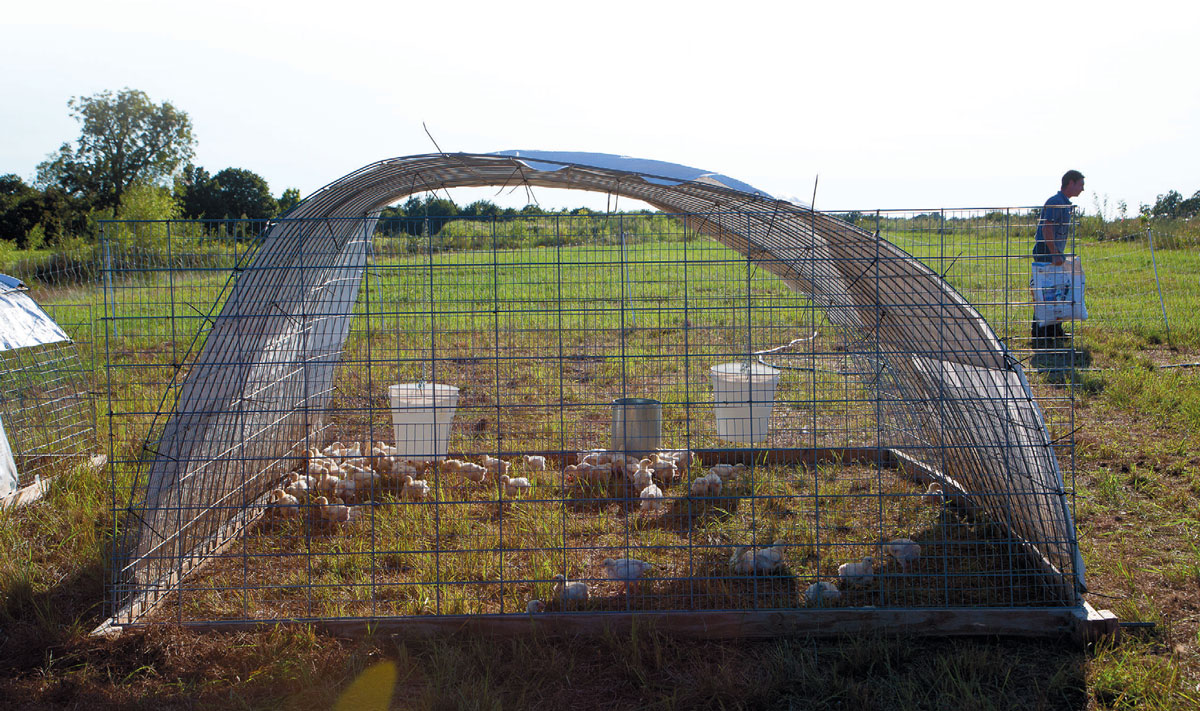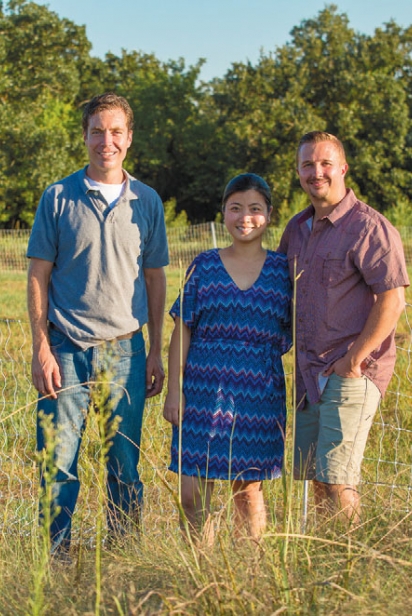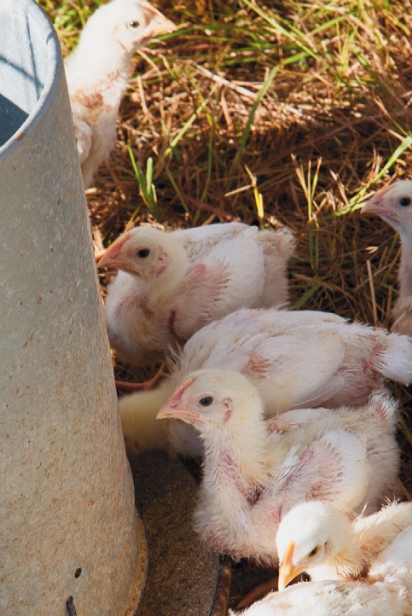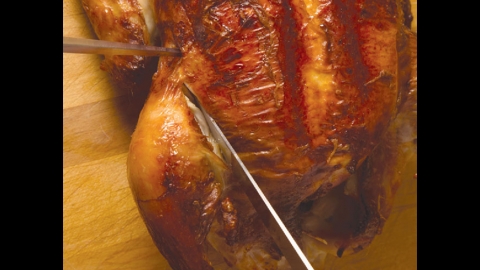The Oklavore’s Dilemma
Lack of processing facility a bottleneck for poultry producers
Shop local. Eat seasonally. Locally owned. Keep it local.
These phrases pop up on T-shirts, burlap shopping sacks, advocacy campaign messaging and in every other corner of the current culinary conversation. In today’s food conversation, local food is certainly on trend.
To the altruistic but unspecific consumer, it may be at best a nice idea, and at worst a compulsive confusion. What difference does it make where my food comes from?
When it comes to local food, there’s an additional (and unfortunate) investment that must be made on the farmer’s end to “keep it local.” Several farmers in the Tulsa area have bought into a more locally focused, sustainable farming model, but getting their product into the hands of the consumer comes at a price.
Again, many might be tempted to ask, who cares? In fact, there are plenty of people in Oklahoma who care a great deal—many of them farmers and food purveyors, or avid readers of this magazine. These are individuals who have literally and figuratively bought into the local food movement.
And while this nebulous term sometimes gets tossed around ambiguously, it essentially represents a commitment to keeping foods and profits in the communities that produced them and reducing the geographic disconnect between where a food originates and where it ends up. Doing so boosts local economies, saves transportation time and costs and often leads to more sustainable food chains and farming practices.
Organizations like farmers’ markets and CSA programs make it easier for farmers to connect with folks interested in supporting local purveyors, but several steps must be taken in order for farmers to directly supply customers with product, and not all of them are easy.
Pete Banks, Mike and Marilyn Wieland own Sloth Acres, a small, sustainable farm specializing in vegetables, duck eggs and pastured poultry. After living in North Carolina and catching wind of the work of Joel Salatin, the patriarch farmer behind Polyface Farm and a pioneer of the pastured poultry model, Pete joined forces with Michael and Marilyn Wieland to open a homestead in Bristow that is slowly but surely transitioning into a sustainable, broad-acre farm. Two years into the operation, the owners are still working their day jobs and farming after hours, but they’re optimistic about growing their operation responsibly.
“We take pride in the fact that we are a local farm,” Mike says, “and that we use ethical honesty and sustainable management practices.”
To those unfamiliar with day-today reality of farming, the impact of “ethical management” on the farm might be tough to understand. And with terms like “organic” and “free range” being co-opted to mean a whole multitude of things in today’s food messaging, “ethical” can take on new meaning depending on who you ask. For farms like Sloth Acres, it means growing produce that’s free of genetically modified organisms (GMOs) and synthetic chemicals, and raising chickens according to the pastured-poultry model.
They aren’t the only local farmers raising pastured poultry. Trailblazers like Greenwood Farms and Koehn’s Grassfed have been leading the charge in Tulsa for a while now, and newer operations like 413 Farm are bringing even more options to the dinner table for consumers who want poultry raised sustainably on pasture.
By allowing chickens to not just roam freely, but on a new patch of land each day, the by-products of their grazing are composted back into the soil and are distributed more evenly. As a result, the chickens contribute to the land’s fertility, and enjoy a quality of life and range of motion that more closely mirrors that of their undomesticated way of life.
“We give the chickens the best experience a chicken can get,” he says. “They’re out on pasture, out in the sunshine. We don’t use any large-scale industrial confinement practices. It’s a lot more natural. “ And consequently, a lot more expensive. From a time, cost and resource standpoint, the pastured method is far more intensive. Electing to raise poultry that isn’t just free roaming but also free of drugs and pesticides automatically adds an additional financial burden to the farmer’s operation.
If that weren’t enough, in order to sell poultry to restaurants or organizations in Oklahoma, any farmer’s poultry (pastured or not) must be processed in a USDA-certified state or federally inspected facility. The problem is, Oklahoma doesn’t have any of these available to your average non-industrial farmer, or the general public.
The next alternative for farmers looking to process in state is to use a mobile processing unit—a facility that moves from farm to farm and is subject to the same rules and regulations as a stationary USDA-approved facility. Unfortunately, according to Stan Stromberg, director of the Food Safety Division at the Oklahoma Department of Agriculture, Food and Forestry, there aren’t any of those legally operating in Oklahoma at the moment, either.
With the closing of the DARP processing plant in Tahlequah last year, Oklahoma farmers must now either process chickens on farm in their own USDA-approved facility, or make the trek across state lines to have their poultry processed.
Farmers can also process up to 1,000 birds on farm in an un-regulated facility, but these birds cannot be sold for retail or donated to organizations or businesses. In short, birds processed on farm can only be used for private consumption.
As such, needing to find a way to legally get their product into the hands of buyers, many local farmers travel to neighboring states to have birds cleaned and packaged for consumption. These facilities are efficient, but the drive is long, and processing usually takes the better part of a day, leaving farmers short a full day of work—and the funds to get there and back. Some might write off this road trip as no big deal, but to a small family farmer who has to make the daylong trip every few weeks, the burden is heavy.
Pete takes Sloth Acres’ chickens to a USDA-approved processing facility in Garnett, Kansas, about once a month from May to November, and the trek takes its toll.
“We wait all day, drive three and a half hours both ways,” he says. “It’s pretty rough.”
Funds spent on out-of-state poultry processing aren’t the only dollars leaving the Oklahoma’s local food movement. The folks at Sloth Acres also have to purchase their chicken feed out of state, as they can’t find non-GMO, certified-organic feed producers within Oklahoma.
“We try to do sustainable, local farming, and it’s very difficult for us,” Pete says. There’s more than a hint of disappointment in his voice, and rightfully so. The reality represents yet another leak in Oklahoma’s agricultural ecosystem—one that creates an even wider gap between the farmers growing the food and the consumer’s table.
“We invest all this money, and it doesn’t stay in our local food movement.” This means having to travel farther and spend more to find the materials necessary to create the products the local consumers want (however niche the market may be). With every barrier to local growth and supply, it becomes harder and more expensive for local buyers to get the food they want. As a result, farmers are forced to raise their already higher prices to cover the cost of labor and processing—all while trying to stay competitive in a crowded marketplace.
It’s here where farmers like Pete and Mike start to lose would-be enthusiasts. Everyone’s a fan of ethical farming and sustainable products until they start to cost a lot more. When it comes to sustainably raised chicken, we want all the quality without the cost.
As Pete tells it, it’s obviously easier for farmers on bigger operations to stay competitive on pricing. But for farms like Sloth Acres, 413 and others, selling poultry at $5 or $10 a pound is a necessary but hard sell.
But farmers who continually stick it out with the pastured model believe there’s something to the adage “you get what you pay for.” Although pastured products are considerably more expensive than industrially raised products, they reason that the flavor, texture and animal health far and away outshine the alternatives.
Indeed, the difference is evident, and farmers like Pete and Angela Faughtenberry at 413 Farm say allowing a customer to taste the difference firsthand is usually more powerful than any marketing.
“Once we can get a customer to buy a chicken, we feel pretty sure that they’re going to come back, and that they’re going to participate in the local food movement,” Pete says. “But that initial sticker shock can be pretty daunting.
“Choice, select, prime... there are graded ratings for beef that are distinct and different, and you can taste it. When I actually tried pastured poultry for the first time, it was phenomenally different. Yes, it costs more, but it’s so much better. Once people try it and get involved in it and experience it, the price becomes much less of a barrier to entry.”
For Cherry Street Farmers’ Market regulars, Pete says the high price tag makes sense. The same rings true for restaurants taking an active role in the local food movement (like Tallgrass Prairie Table, who recently initiated a yearlong partnership with Sloth Acres for pastured poultry). But Pete says it takes education to help newbies get comfortable with spending more on pasture-raised chicken.
“If there was a chicken processor in Northeast Oklahoma,” Pete says, “I would guarantee them all of my business.”
Other farmers share Pete’s enthusiasm for a local processor, but also recognize it’s a long-range goal. Angela Faughtenberry—who also processes in Garnett, Kansas—cites challenges like the Oklahoma heat as a major detriment to processing out of state. As a result, and to make the trips more economical, many farmers are forced to reevaluate when to take birds for processing, sometimes resigning to eliminate summer harvesting altogether in the name of food safety and bird quality.
With a closer facility, birds would be subjected to less duress, and trips could be made more frequently. But with the facility nearly four hours away, farmers are forced to be wise with their time and product. A local facility would undoubtedly lessen the blow of some of those choices.
“It’s going to take someone with a lot of passion to make it happen,” Faughtenberry says.
Pete and Mike agree, and are quick to point out that until there’s demand from farmers and consumers for a private processing facility in Oklahoma, local farmers will be forced to continue to process poultry out of state, leaving Oklahoma’s food loop open, and a portion of the revenue stream flowing out.








